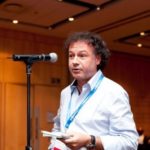Link to Pubmed [PMID] – 19709289
Link to DOI – 10.1111/j.1574-6941.2002.tb01019.x
FEMS Microbiol Ecol 2002 Nov; 42(2): 289-302
A comprehensive multiphasic survey of the prevalence and transfer of gentamicin resistance (Gm(r)) genes in different non-clinical environments has been performed. We were interested to find out whether Gm(r) genes described from clinical isolates can be detected in different environmental habitats and whether hot spots can be identified. Furthermore, this study aimed to evaluate the impact of selective pressure on the abundance and mobility of resistance genes. The study included samples from soils, rhizospheres, piggery manure, faeces from cattle, laying and broiler chickens, municipal and hospital sewage water, and coastal water. Six clusters of genes coding for Gm-modifying enzymes (aac(3)-I, aac(3)-II/VI, aac(3)-III/IV, aac(6′)-II/Ib, ant(2”)-I, aph(2”)-I) were identified based on a database comparison and primer systems for each gene cluster were developed. Gm-resistant bacteria isolated from the different environments had a different taxonomic composition. In only 34 of 207 isolates, mainly originating from sewage, faeces and coastal water polluted with wastewater, were known Gm(r) genes corresponding to five of the six clusters detected. The strains belonged to genera in which the genes had previously been detected (Enterobacteriaceae, Pseudomonas, Acinetobacter) but also to phylogenetically distant bacteria, such as members of the CFB group, alpha- and beta-Proteobacteria. Gm(r) genes located on mobile genetic elements (MGE) could be captured in exogenous isolations into recipients belonging to alpha-, beta- and gamma-Proteobacteria from all environments except for soil. A high proportion of the MGE, conferring Gm resistance isolated from sewage, were identified as IncPbeta plasmids. Molecular detection of Gm(r) genes, and broad host range plasmid-specific sequences (IncP-1, IncN, IncW and IncQ) in environmental DNA indicated a habitat-specific dissemination. A high abundance and diversity of Gm(r) genes could be shown for samples from faeces (broilers, layers, cattle), from sewage, from seawater, collected close to a wastewater outflow, and from piggery manure. In the latter samples all six clusters of Gm(r) genes could be detected. The different kinds of selective pressure studied here seemed to enhance the abundance of MGE, while an effect on Gm(r) genes was not obvious.

